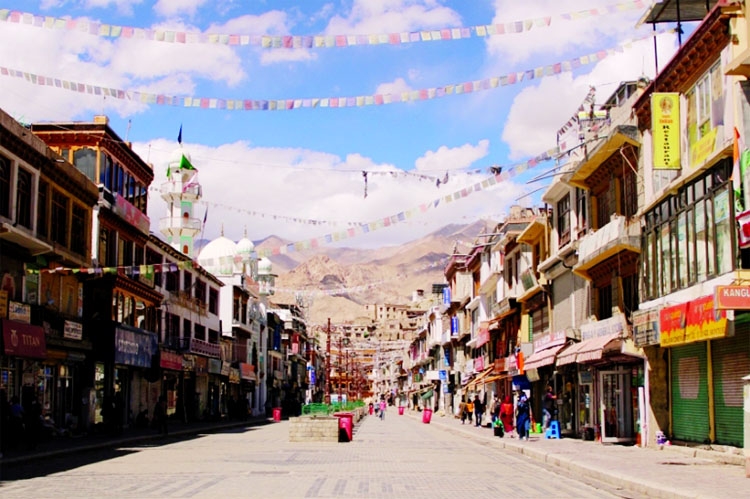
Al Jazeera :
Earlier this week, the region of Ladakh, a Himalayan desert in Indian-administered Kashmir that borders China and Pakistan, witnessed an unprecedented shutdown to demand statehood and protection of land and jobs.
The rare strike held on Monday was jointly called by two groups based in the two districts of Ladakh: the Apex Body of Leh and the Kargil Democratic Alliance, both campaigning for the residents’ rights in the tribal-dominated region and preservation of their cultural identity.
The two groups were formed after New Delhi in 2019 unilaterally scrapped the special status of Indian-administered Kashmir and divided the disputed region – also claimed in its entirety by Pakistan – into two federally governed territories: Jammu and Kashmir, and Ladakh.
On August 5, 2019, Prime Minister Narendra Modi’s right-wing government abrogated Articles 370 and 35A of the Indian constitution, legislation that had provided Indian-administered Kashmir with a degree of autonomy and denied property rights to outsiders from other Indian states. Ladakh is home to nearly 300,000 people living in its two districts: the main city of Leh which is predominantly Buddhist, and Muslim-majority Kargil. Situated at an altitude of 5,730 metres (18,799 feet) above sea level, 97 percent of the region’s population is tribal.
And for the first time in decades, the two Ladakh districts are on the same page in pressing the government for their demands for statehood and protection of rights. New Delhi’s controversial 2019 move was immediately rejected by most residents in Kargil, who wanted to remain with Indian-administered Kashmir, home to nearly 13 million people, more than 68 percent of them Muslim, according to a 2011 census.
Nearly seven million of those people live in the Kashmir Valley, where 97 percent of the residents are Muslim and which has been a hotbed of rebellion against Indian rule for decades.
On June 15 last year, deadly clashes between Indian and Chinese soldiers erupted in Ladakh’s Galwan Valley. At least 20 Indian and four Chinese soldiers died in rare hand-to-hand combat involving clubs and rocks.
Since then, thousands of soldiers have been deployed on both sides of the de facto border, the Line of Actual Control (LAC), with experts concerned the tensions could lead to an unintentional war. Both India and China have been building infrastructure at breakneck speed near the LAC as several rounds of talks between their militaries failed to ease the tensions.
Ladakh is both geographically and politically distant from Muslim-majority Kashmir Valley where widespread anti-India sentiment gave birth to an armed rebellion three decades ago.
As the valley remained restive, a peaceful Ladakh saw tourism flourishing as the main Jigmet Paljor, 27, a student activist from Leh who is also a member of the Apex Body of Leh, said their demands already sent to India’s home ministry are being “deliberately delayed”.
“Earlier, we had Article 370 with safeguards, but when we were given the Union Territory, it was without [elected] legislature. The other local elected representatives have no power. People fear what will happen to our jobs? What will happen to our land?” he asked.
“Our population is less. Our environment is fragile. Our culture is very distinct. The safeguards are very important to us.” Siddiq Wahid, a political analyst based in Indian-administered Kashmir, told Al Jazeera the people in Ladakh feel “endangered as a culture”.
“Ladakhis in Leh and Kargil have united after more than 40 years because they realise that they have lost their political autonomy,” he said, adding that the residents are now protesting “because they feel duped, two years after being promised greater self-rule”.
“They are under a more centralised control than they have ever been in their modern history,” Wahid said. “The resentment is just a beginning.”

